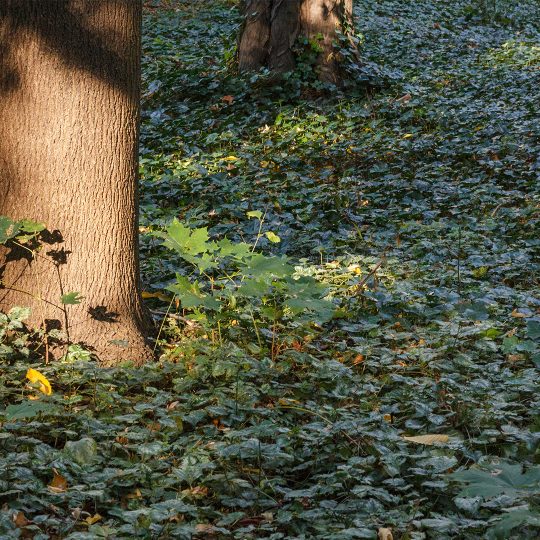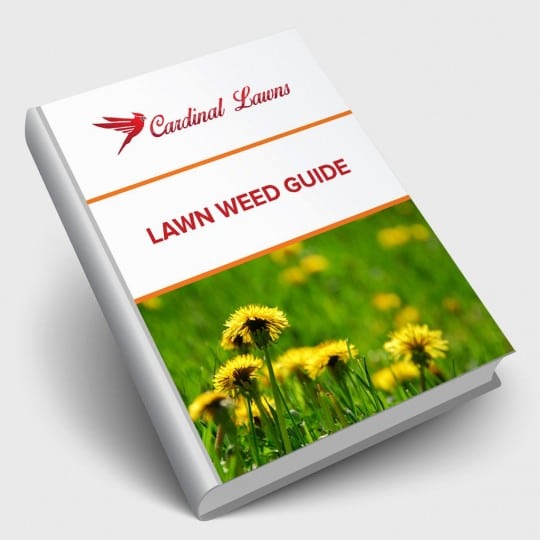Identifying Woody Weeds
Then Controlling the Spread
Posted
June 15, 2023

When is a weed not just a weed? When it’s an entire tree, shrub, or vine! That’s right. Left untreated, some weeds grow taller and spread faster than the dainty dandelion. And to make matters worse, some are even poisonous too. So, how do you identify woody weeds, and what do you do about them? Read on.
Identify Woody Weeds
It’s not hard to spot a woody weed. These perennial plants have woody stems or woody roots and typically grow in the woods. They climb trees, creep along pathways, and cover the ground. Most woody weeds easily adapt to their environments, meaning they can grow in full sun or shade. They also don’t mind poor soil conditions and may still spread quickly in drought conditions.
While some are easy to spot by their tougher features, great care should be taken when trying to remove them. Some of these weeds feature poisonous properties that can lead to a nasty rash for you or harm pets.
Poisonous Woody Weeds
Be on the lookout for any of these weeds around your home. They’re not only invasive, but they can cause discomfort if the plant is touched or berries are ingested.
Poison Ivy. Unfortunately, this poisonous weed grows as a groundcover, shrub, or climbing vine. No matter where you find it, if you touch it you’ll also find an uncomfortable rash caused by the oily resin found in its leaves, stem, and roots. Look for its telltale three leaves that grow from a woody stem. The stem and young leaves are reddish in color, but then the leaves turn a shiny green in the summer and eventually yellow or redden in the fall. Even though the identifiable leaves drop in the winter, the hairy vines remain and regenerate in the spring. There are herbicides formulated to kill poison ivy, and it can also be carefully cut back or dug out. Any tools that touch the plant should be washed before reusing.
Poison Oak. Another toxic plant contains the oil that causes an allergic reaction upon contact. This perennial grows as a dense, leafy shrub in sunny places or a shady climbing vine. It also has three leaves that grow alternately along the stem. These leaves turn red in the fall and become even more toxic. Unlike poison ivy, poison oak produces small white flowers.
English Holly. This evergreen shrub is widely recognized, especially around the holiday season. Dark green leaves feature sharp spines and spiky edges. The plant also produces white flowers in the spring that turn into reddish berries in the winter. The berries are poisonous to people and animals, but birds seem to like spreading their seeds.
Virginia Creeper. This fast-growing perennial vine is able to adapt to its sunny or shady environment. Its long, red-stemmed tendrils feature adhesive pads that help it stick to walls and other surfaces. You may notice small yellow flowers blooming in the summer. These are replaced by poisonous dark berries in the fall.
Other Weeds No One Needs
Technically, weeds are plants you don’t want in your garden. Some people knowingly grow so-called weeds for their hardy nature. However, not controlled, these invasive plants can quickly take over.
Brambles. This prickly shrub is sometimes grown on purpose for its arching stems and juicy berries. But left untreated, it can become a dense, tangled mass of woody stems.
Honeysuckle. Sure, it sounds sweet, but these large woody weeds can grow up to 30 feet tall. The egg-shaped leaves are slightly hairy and you’ll see flowers bloom in late spring. Come summer, red berries appear that last throughout winter. Cut or pull the weed, but make sure the root comes out too or it will return.
English Ivy. This is another vine-like ground cover with attractive leaves that can quickly spread up your chimney and choke your trees.
Best Left In the Woods
There are certain woody weeds that have no place in residential yards. Control these at all costs.
Kudzu. This woody vine features large leaves that climb easily or root where they touch the soil. Cut the vine down to the ground and treat the woody stumps with herbicides to prevent regrowth. It may take multiple applications and several seasons to stop kudzu completely.
Tree of Heaven. It’s anything but heavenly. With gray bark, reddish twigs, light green seed pods, and yellow flowers, it’s not hard to spot. It’s also a favorite plant for invasive spotted lanternflies, which is just another reason to try and prevent any seedlings from developing.
Wormwood. You may smell its strong odor before you see the clusters of woody stems with green and white leaves, silky gray hairs, and yellow flowers. Often found thriving in pastures, this poisonous plant quickly crowds out other plants. If you find it in your lawn, it’s best to control it before it reseeds. Pull the weed with a gloved hand and be sure to remove the root.
Professional Weed Control
When faced with hardy, woody weeds, you’re more likely to get the upper hand early on. Make sure you remove the root to help prevent the weed from returning. You can also consider calling a professional lawn and garden company for assistance, especially when dealing with poisonous plants. Contact Cardinal Lawns to help identify woody weeds in your yard and prevent them from taking over.

Download Your FREE Lawn Weed Guide
Before weeds take over your yard this season, learn to identify and prevent them in the first place. Keep your lawn looking great all year!